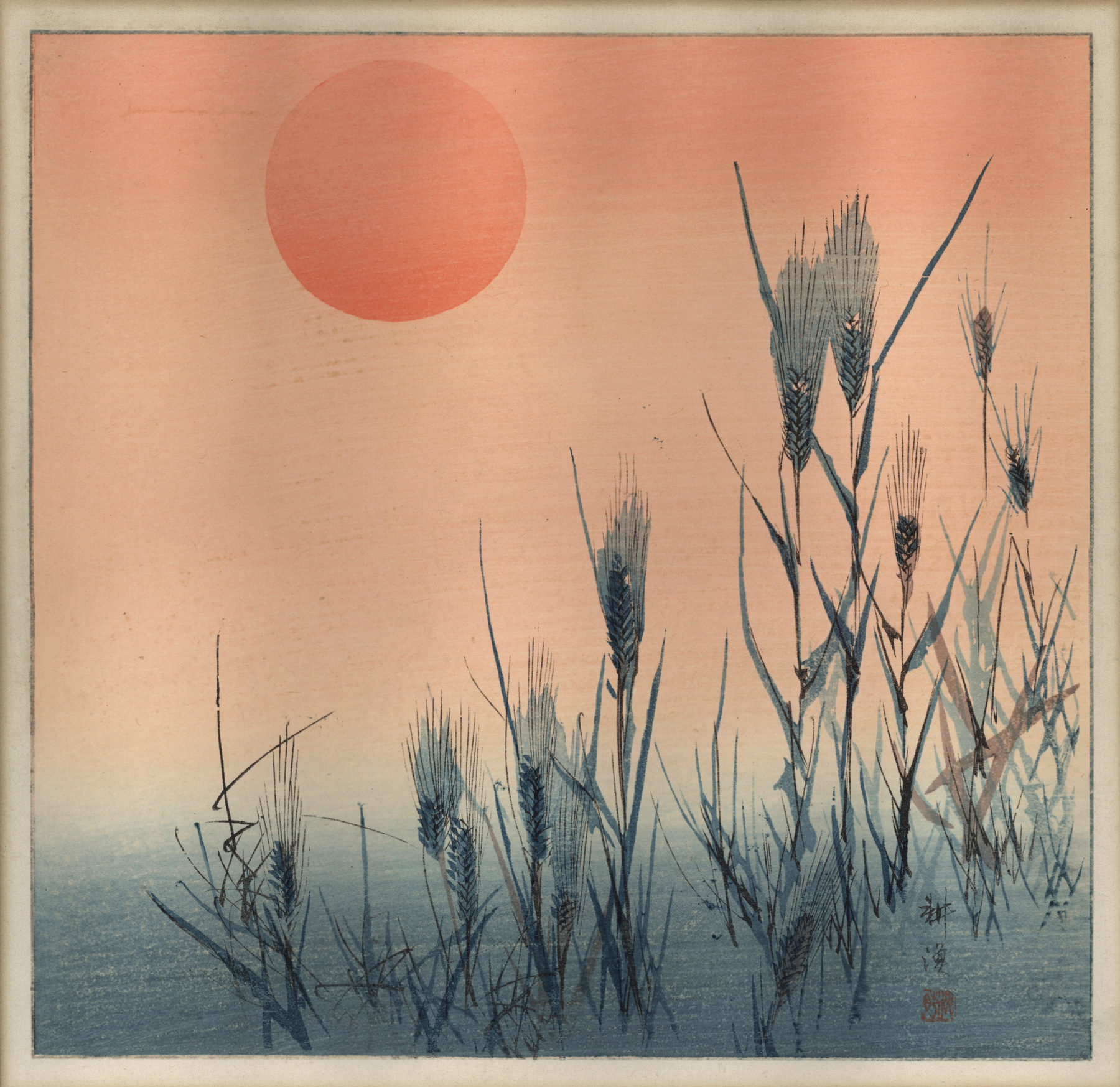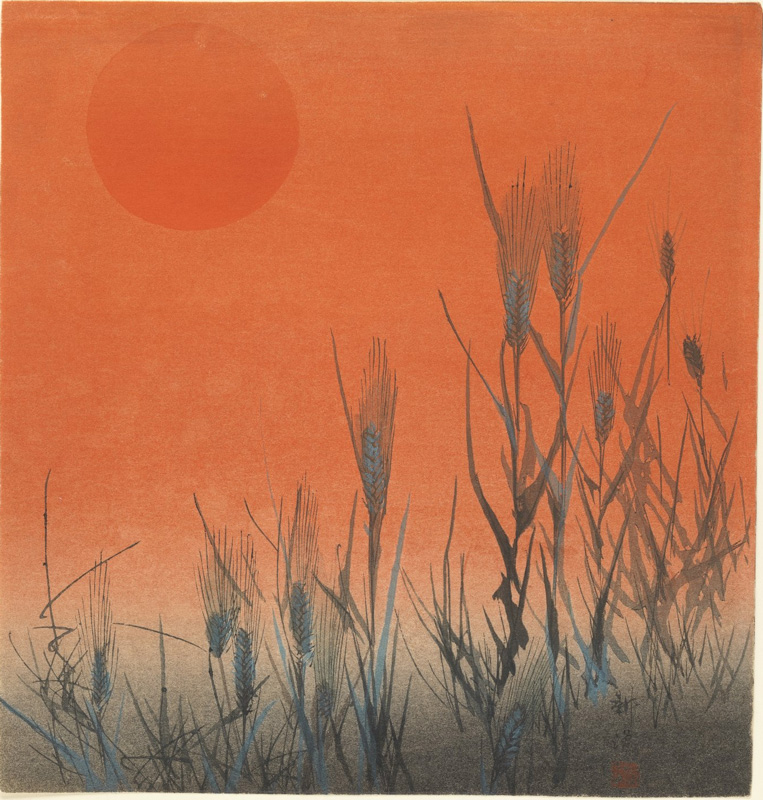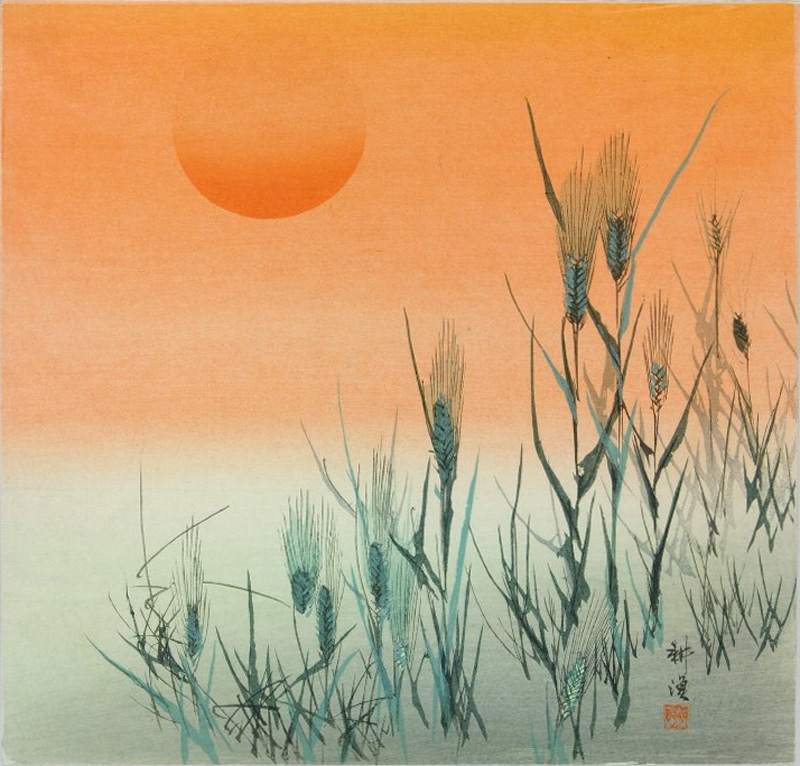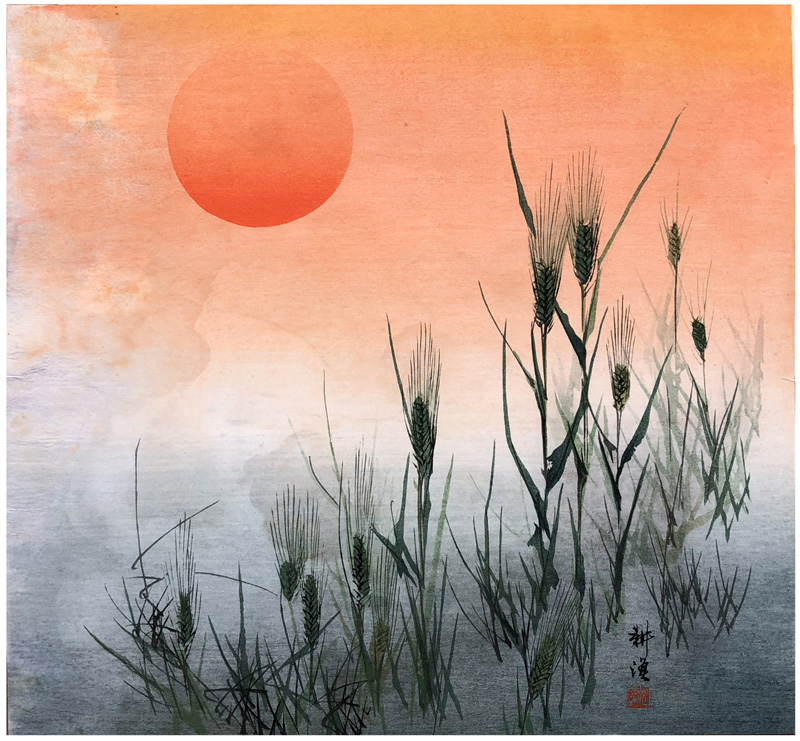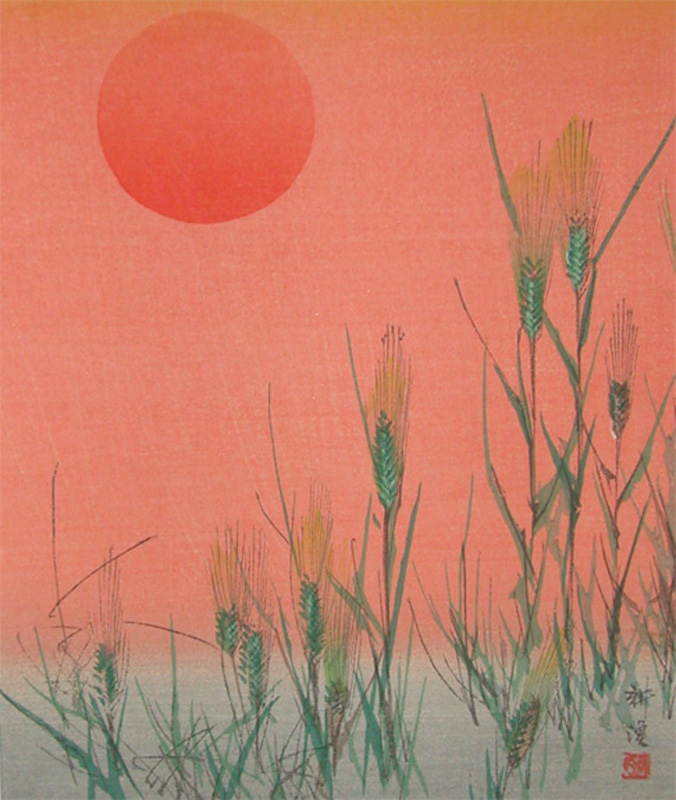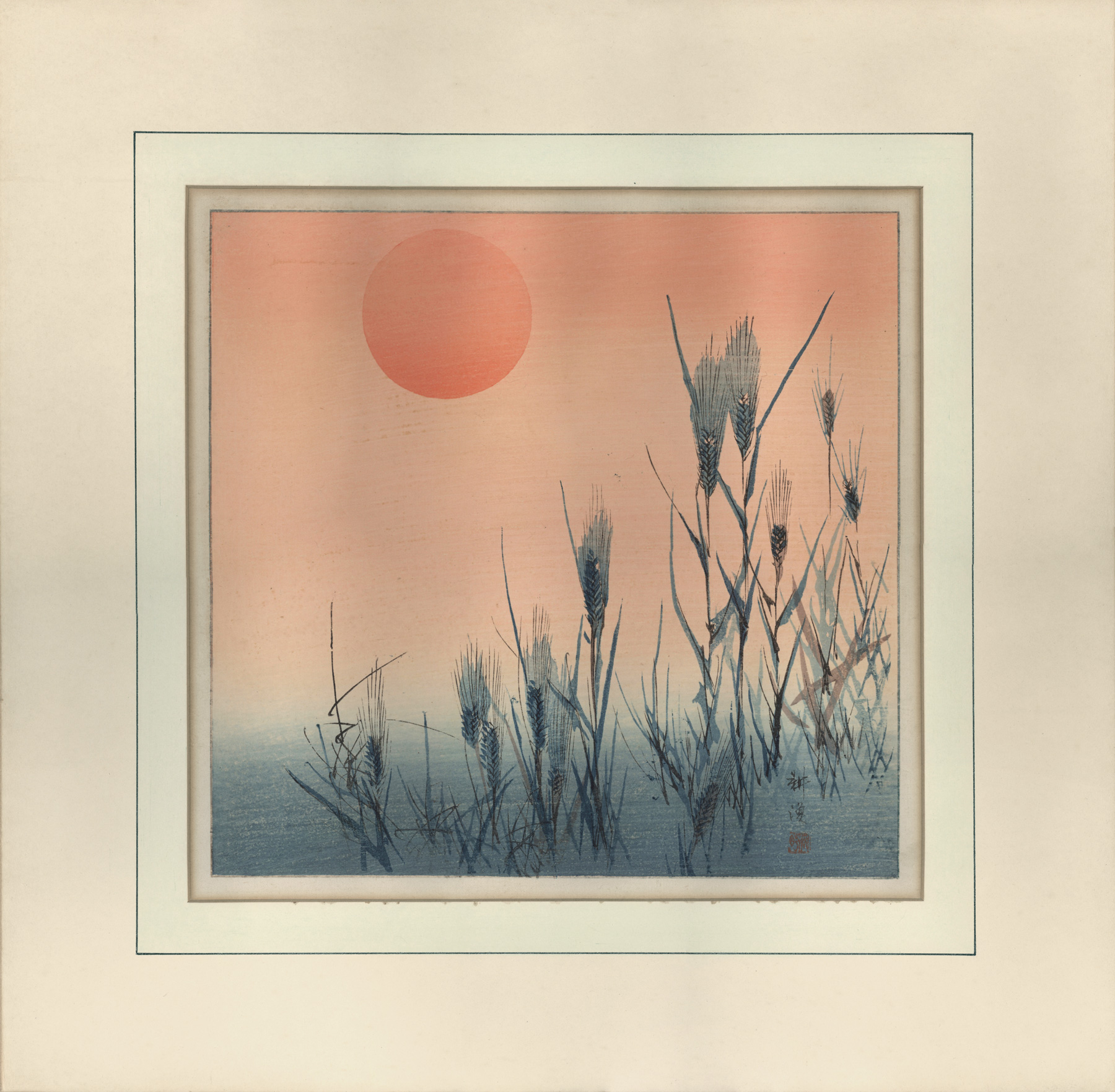About This Print
One of about fifty kacho-e (bird and flower prints) in the shikishiban (almost square) format. These prints were designed by Tsukioka Kōgyo (1869-1927) for the publisher Daikokuya (Matsuki Heikichi) around the turn of the 20th century, who reprinted many of them at a later date, mainly for the export market, such as this collection's print.
Titling this print "Rice Stalks" the authors of The Beauty of Silence comment "Green rice stalks in the foreground contrast a brilliant orange sky at sunset."1 Other sources use the title "Barley at Sunrise", a more accurate descriptive title I believe.
1 The Beauty of Silence: Nō and Nature Prints by Tsukioka Kōgyo (1869-1927), Robert Schaap & J. Thomas Rimer, Hotei Publishing, 2010, p. 151.
Barley at Sunrise
source unknown
Kōgyo's Shikishiban Kacho-e
Source: The Beauty of Silence: Nō and Nature Prints by Tsukioka Kōgyo (1869-1927), Robert Schaap & J. Thomas Rimer, Hotei Publishing, 2010, p. 40.| Kōgyo’s oeuvre also comprises some fifty shikishiban prints. While these works include some landscape compositions, most are illustrations of the natural world, a genre referred to as Kachō-e (literally, “flower and bird pictures”). Kōgyo was one of a number of artists who designed such (export) shikishiban. His teacher Gekkō [Ogata Gekkō (1859-1920)], the lacquer artist Shibata Zeshin (1807-91), Ohara Koson [Ohara Koson (1877-1945)], and Yamamoto Shōun can all be counted among the artists enlisted by the Daikokuya to design these compositions. Many of these squarish shikishiban prints are thought to have been issued by the Daikokuya, who continually explored new avenues for print subjects and types primarily destined for the export market in the late 19th and early 20th century (a number carry a seal verso reading ‘Made in Japan,” which was required for the export to the United States). …Kōgyo’s imaginative designs for this set reflect his keen interest in flower and bird topics. His prints frequently display the same delicate treatment that is so characteristic of the work of Seitei [Watanabe Seitei, 1851-1918]. It must be pointed out, however, that Seitei’s depictions of the natural world seem more realistic. Reprints of work from this group are not uncommon. These later editions can be recognized by the black contour lines around the image and the large white borders. They are printed on very thin paper, but they also appear in an edition that is printed on heavier, denser quality paper that one would expect to find with surimono. |
Print Details
| IHL Catalog | #2218 |
| Title or Description | untitled (Barley at Sunrise. Also titled Rice Stalks.) |
| Series | |
| Artist | Tsukioka Kōgyo (1869-1927) |
| Signature | Kōgyo 耕漁  |
| Seal of Artist | Kōhan seal (see above) |
| Date | 1921/1939 (orig. c. 1900) The below stamp on verso carries the inventory number of the publisher along with "MADE IN JAPAN" indicating the print was destined for export to the United States and likely created between 1921, when the specific wording "Made in Japan" (rather than "Made in Nippon", for example) was required for imported goods, until 1939 when imports of Japanese products essentially ceased. A second inventory number is also stamped verso, as shown below right. 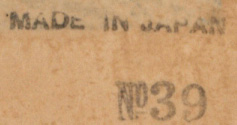 |
| Publisher | attributed to Matsuki Heikichi (Daikokuya Heikichi 大黒屋平) [Marks: pub. ref. 029] |
| Carver | |
| Printer | |
| Impression | excellent |
| Colors | excellent |
| Condition | good - toning mainly noticeable verso; attached along margin edges to mat verso |
| Genre | ukiyo-e; kacho-e |
| Miscellaneous | |
| Format | shikishiban |
| H x W Paper | 10 7/8 x 11 3/16 in. (27.6 x 28.4 cm) |
| H x W Image | 9 3/8 x 9 13/16 in. (23.8 x 24.9 cm) |
| Collections This Print | Brooklyn Museum 173684 (earlier c. 1900 edition); The British Museum 1906,1220,0.167 (earlier c. 1900 edition) |
| Reference Literature | The Beauty of Silence: Nō and Nature Prints by Tsukioka Kōgyo (1869-1927), Robert Schaap & J. Thomas Rimer, Hotei Publishing, 2010, p. 151. |
12/1/2019 created


